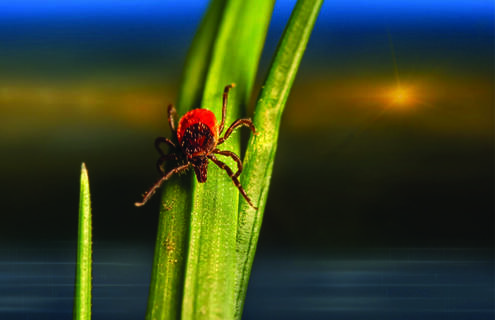
When is tick season? All year round.
According to Tick Free NH, New Hampshire has had some of the highest incidences of Lyme disease in the United States. An estimated 75% of all Lyme disease cases are acquired from ticks picked up during activities around the home.
“Every year, there has been an increase in tick-related illnesses in our ED,” said Kristie Foster, BSN, RN, nurse manager and clinical educator in the Emergency Department. “We see an uptick in the early spring throughout summer and another surge in the fall.”
What are the best ways to protect yourself and those you care about from ticks?
First, prevent them from being on your body:
- Wear tick repellant clothing
- Wear light colored clothing to see ticks
- Tuck long pants into socks and wear long sleeves
- Consider wearing hats or caps with ear flaps to protect ears and necks
- Adults: Use insect repellent which includes one of these three active ingredients: 15-30% DEET, oil of lemon eucalyptus (OLE), or 10-20% picaridin.
- Children: Do not use insect repellents on babies younger than 2 months. Do not use products containing oil of lemon eucalyptus (OLE) on children under 3 years old.
- Stay to the center of paths. Ticks are more likely to be found in wooded and brushy areas with high grass and leaf litter.
Then, after venturing outdoors, check yourself, your children, and pets for ticks:
- “If your freckle moves, check it and remove it!” says Amanda Fay, MSN, RN, clinical educator for Medical-Surgical, Care Management, Pharmacy and Inpatient Rehab.
- Take a lint roller and check your clothing and any bare skin.
- You can tumble dry clothes in a dryer on high heat for six minutes to kill ticks after you come indoors.
- Ticks love to get close: Check under the arms, in and around the ears, back of the knees, in and around the hair, and the groin.
- Remove any tick you find using the proper method. The CDC offers a handout of what to do: Tick Bite: What to Do (cdc.gov)
- Ticks typically found in New England include the American Dog Tick, Blacklegged Tick, and Brown Dog Tick. Know what they look like and what diseases they might spread.
“It’s so important for anyone doing outside activities to do tick checks each and every day to try to mitigate tick-related illness from transmitting,” Foster said. “Ticks can be very small, as small as the period at the end of this sentence, and the small ones are the ones that transmit illness.”
If you develop symptoms, see your healthcare provider immediately. The CDC lists these warning symptoms: fever/chills, aches and pains, or a rash.
Read Bonnie Swift's story of her potentially life-threatening diagnosis of tick anaplasmosis.